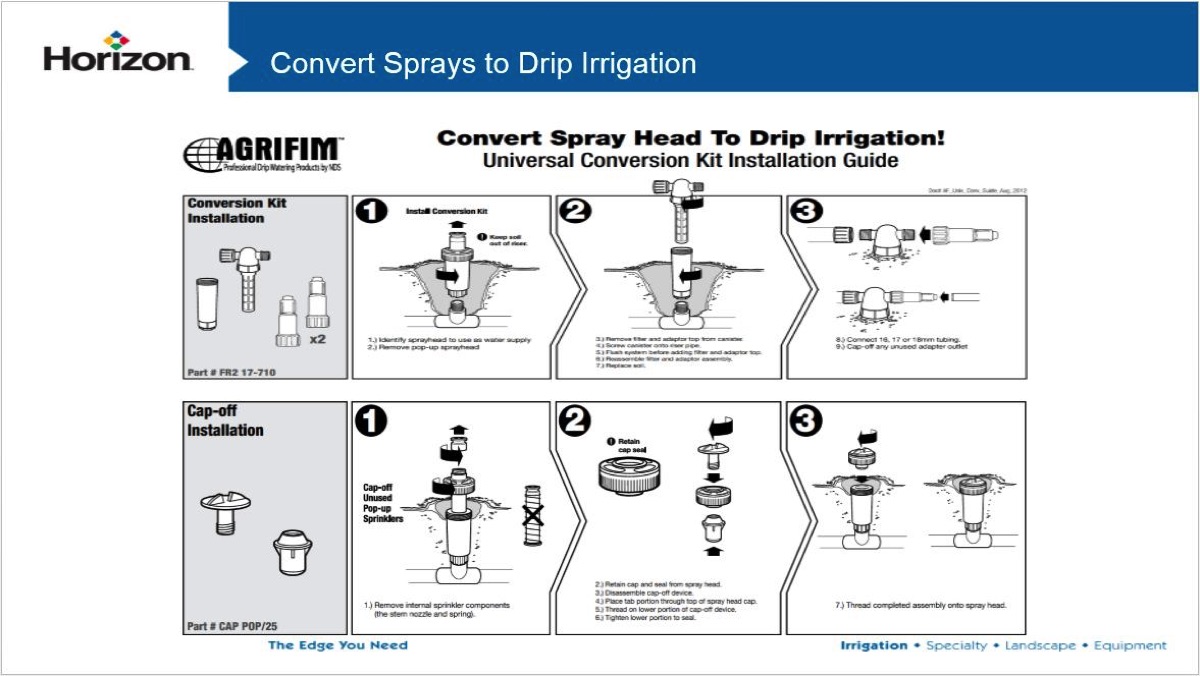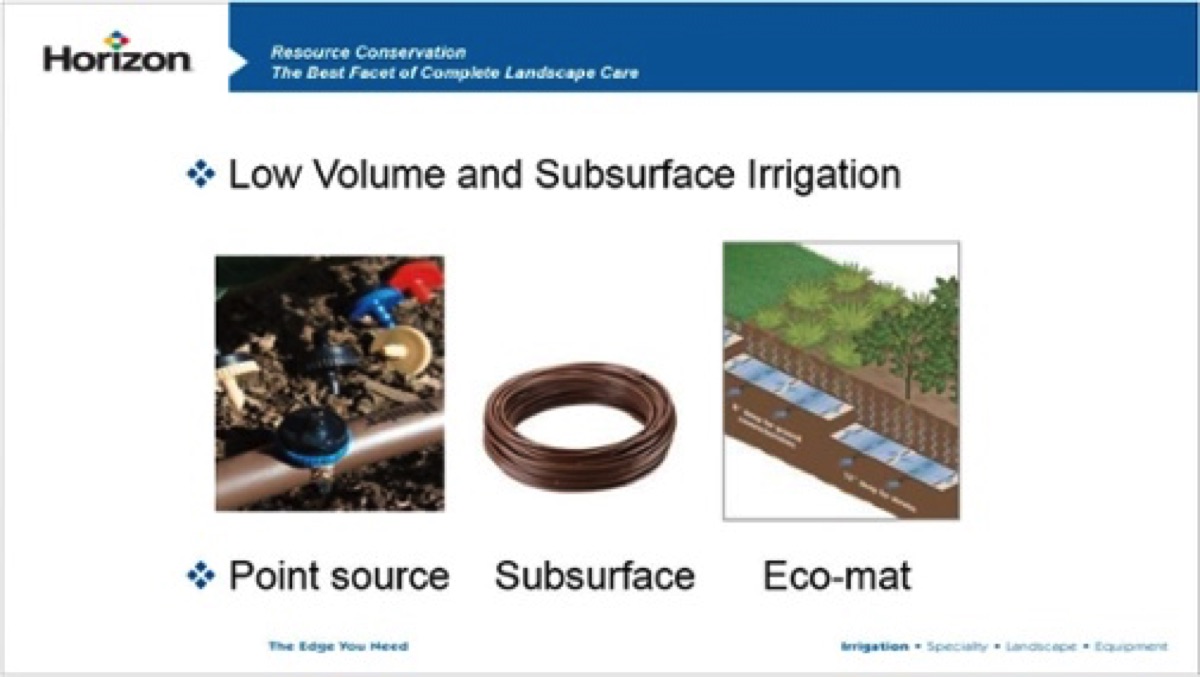- Categories:
- Water Conservation
- Construction
- Drought Solutions
- Irrigation

Drip irrigation can be a great way to minimize evaporation and deliver the perfect amount of water to plantings, but installing it in some soils can be challenging.
After watching Part 11 of our Drought Solutions video series, you'll know how to quickly convert a spray valve to a drip valve and how to avoid common problems contractors experience when moving to subsurface irrigation.
Converting Spray Valves To Subsurface Drip Irrigation - Video Transcript
Here's a cool little product for converting that little weird area. You know that little weird area. It's hard to spray. It's just like, why are we growing turf there?
Cool product that Agrifim has. Rain bird has one. Hunter has one. Toro has one. This one I like the best so far.

You take out your spray body. The whole thing. You screw in their body right here. This is a screen and a pressure regulator all installed in one. Screw that on. Hook up your drip tubing.
You just converted that spray valve to a drip valve without digging up anything. Without digging up the valve to put a pressure regulator and a filter on it. It's all right there.
And then what you do with the extra heads that are on the system, you just go and put a plug in for the male or female and you plug off all the other heads.
So you just took that little weird system that's not doing anything and you converted that one system that was a problem over to drip.
Low Volume and Subsurface Irrigation

Points source emitters. I know you guys use quite a bit of this.
How much subsurface do you use? A lot? Where do you use it? Turf or flower beds? Beds. Yeah, we struggle with this under turf. We struggle with this under everything because our soil is so crappy. Our soil just leaches water like crazy. It's so porous. In clay soils you can have some issues too where the water doesn't move enough and it just makes this glob.
So what I end up having to use especially in my flower beds that we're doing subsurface in, I gotta use this Eco-Mat.
You basically put the Eco-Mat down in the bed. You put the grid pattern on top of it. And then now that mat holds the moisture and it's a capillary mat like we used to use in the nursery benches. Pretty cool stuff.
If it's in turf, deeper than your aerator. If it's in your flower beds, I go just below a 1 gallon root ball. Depends on what you're planting in that flower bed all the time.
Your guys gotta know, your crews gotta know that it's down there cause you'll stick a shovel through it. Doesn't matter if you stick a shovel through the mat as much as it does the subsurface.
Subsurface, originally when it came out a lot of guys jumped on it in Phoenix for obvious reasons. No evaporation. That's what they painted it as. No evaporation, no evaporation. Yeah, it's a great deal.
Man, our soils are so rough that we get great looking checkerboard pattern turf. You get this green stripe, green stripe, green stripe, green stripe and all of these little brown spots in between. Because it's really hard to get that tear dropped shape out of that emitter that's coming out of that emitter of water.
The water just naturally wants to get that tear drop to go up and these are relying on soils that can wick a little bit of water back up and you gotta add a ton of organic matter and we're going to talk about that this afternoon. None of this is any good if your soils aren't working for you.